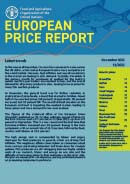出版物
Demand for seafood is slowing in the European market, as inflation is passed on to consumers. In a recent study on the impact of the Ukraine conflict on European Union consumer behaviour, it was found that 50 percent of the interviewed felt fish prices went up strongly. Fish was thus second only to red meat among all food products where such price increases were seen.
The first months of the year are generally a slow sales period for fishery and aquaculture products in Europe, and 2023 has not been an exception to this rule. Demand was low over the course of February, but prices generally moved up, especially for seabass and seabream and groundfish. In this issue of the European Fish Price Report, some 31 percent of the fish prices moved up, 27 percent moved down, while 41 percent stayed...
January is generally a quiet month for fisheries and aquaculture products sales in Europe, after the strong Christmas and New Year sales. Collective catering is solely responsible for some limited sales compared to a very reduced demand from retailers and caterers in Europe.
As normal in the period of the year, the main importers and brokers have already completed their activities for the year-end sales, while wholesale markets will increase in activity over the coming weeks as restaurant menus and fish counters increase their festive range in preparation for Christmas and the New Year. The festive end of year sales season will be more concentrated as the two main festivities will be on a Sunday.
In the course of November, the euro has recovered in value versus the US dollar, which makes European traders more competitive in the world market. However, high inflation and overall uncertainty in the market are leading to slow demand. Typically, November is the primary month for purchases of seafood for the festivity period, but this year traders are reluctant to buy, and the overall demand for all primary products is slow, leading to lower prices...






